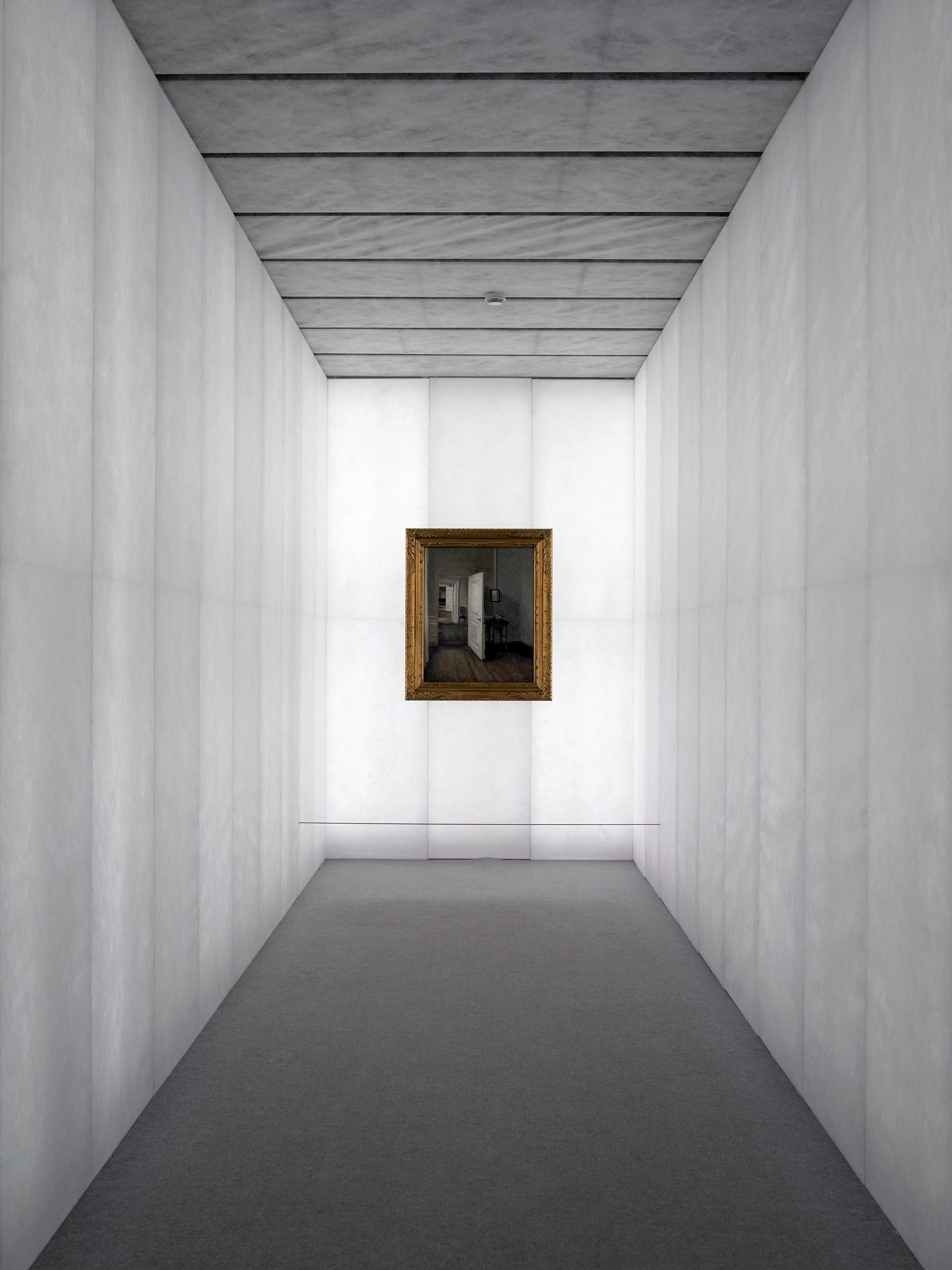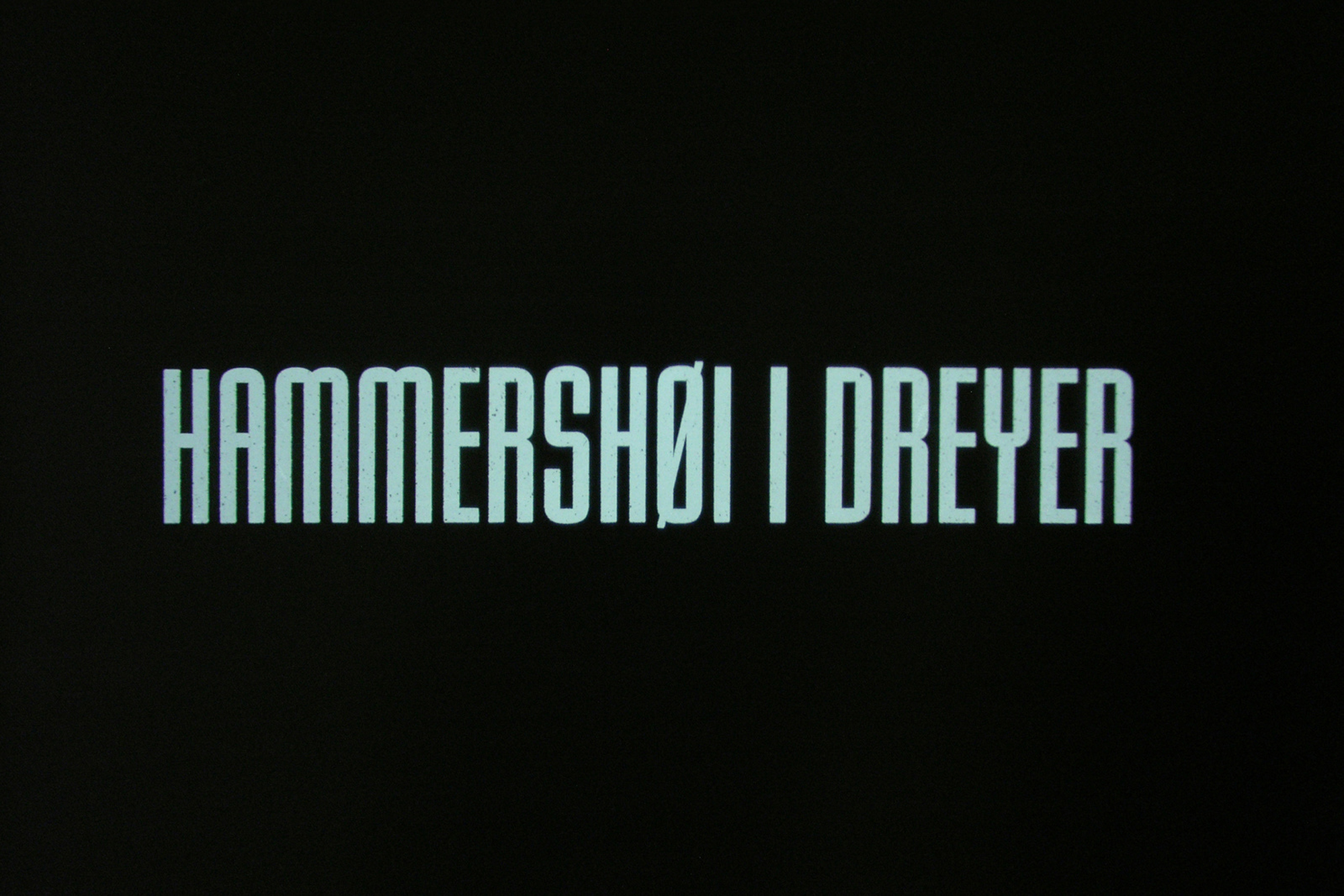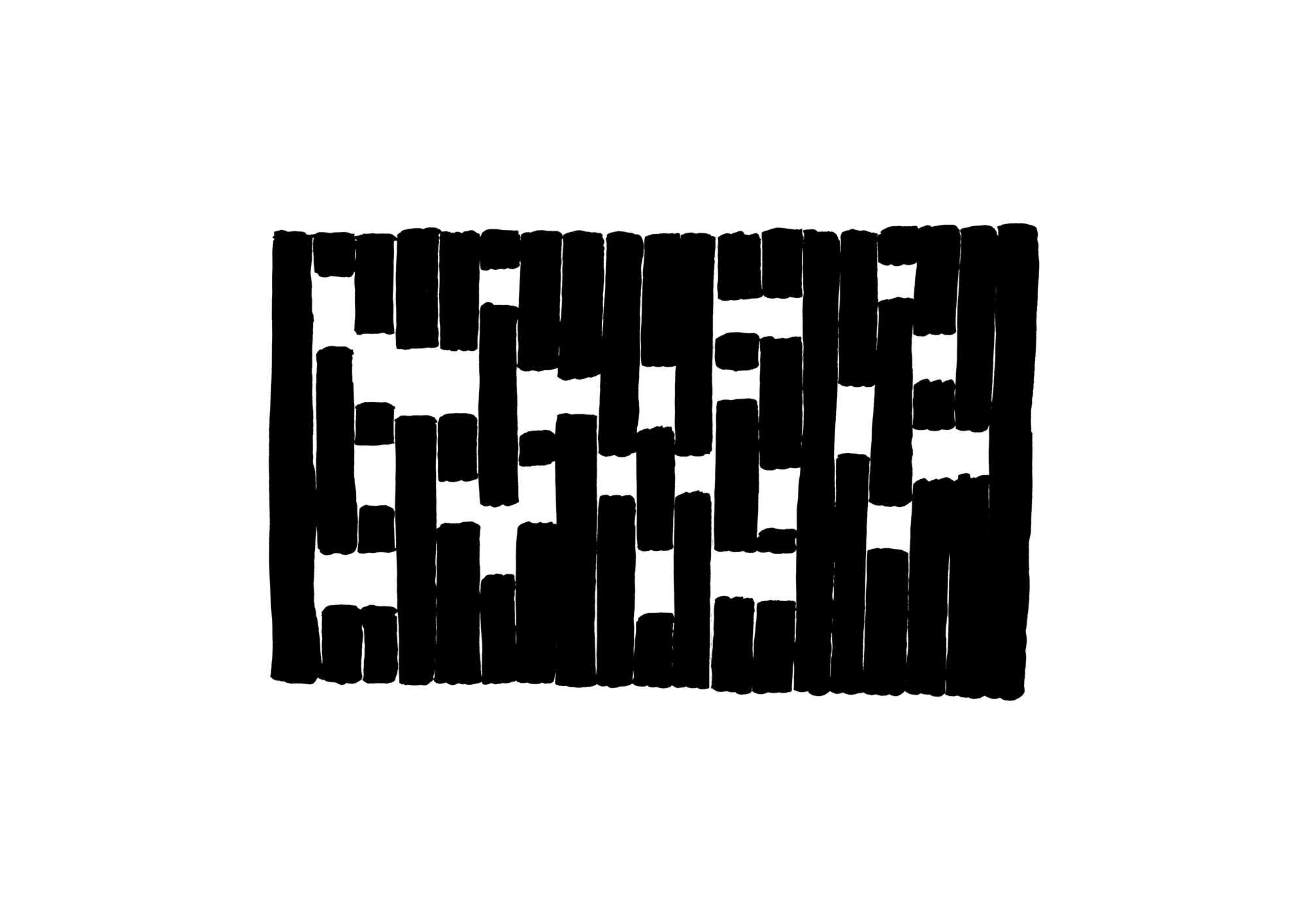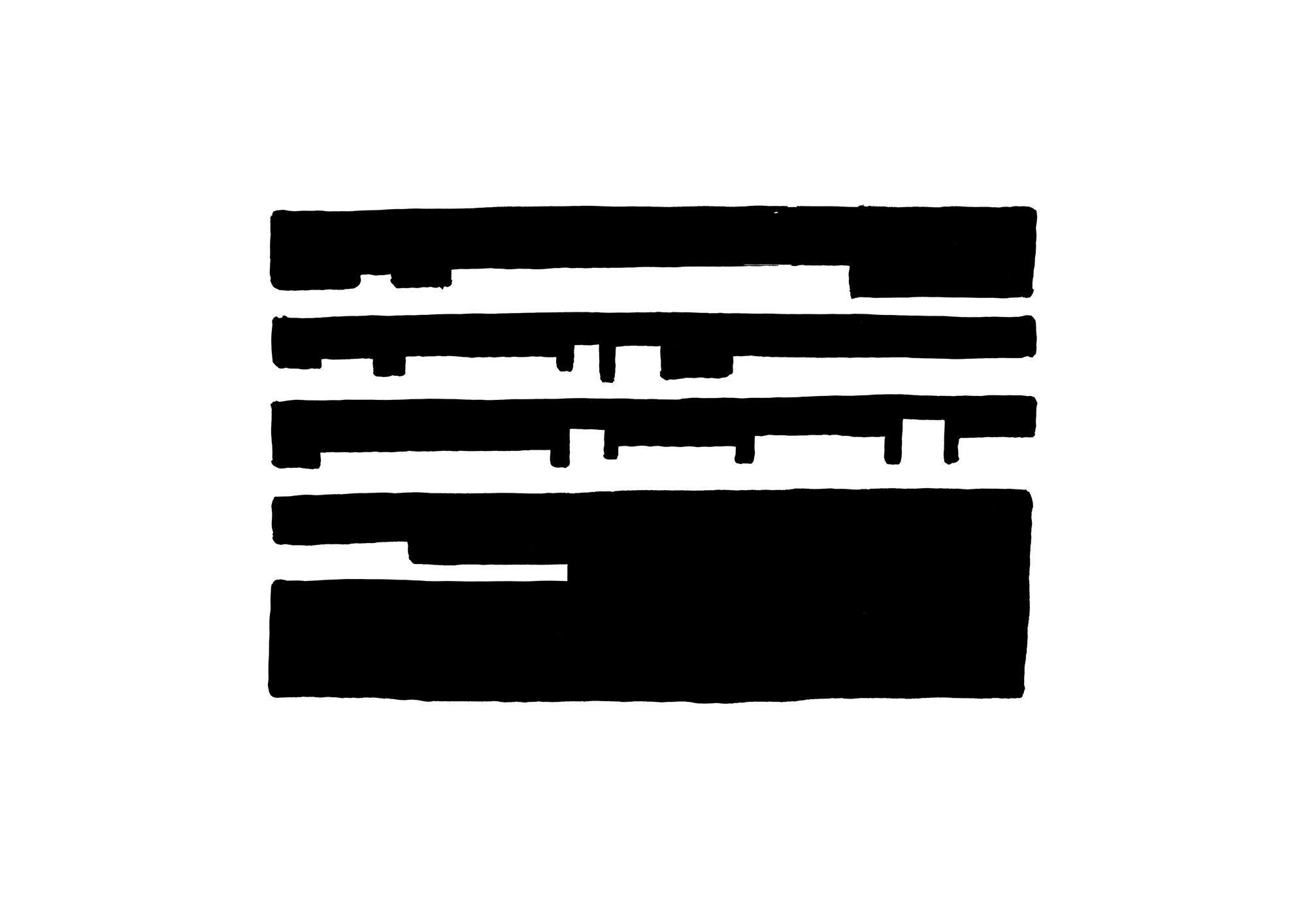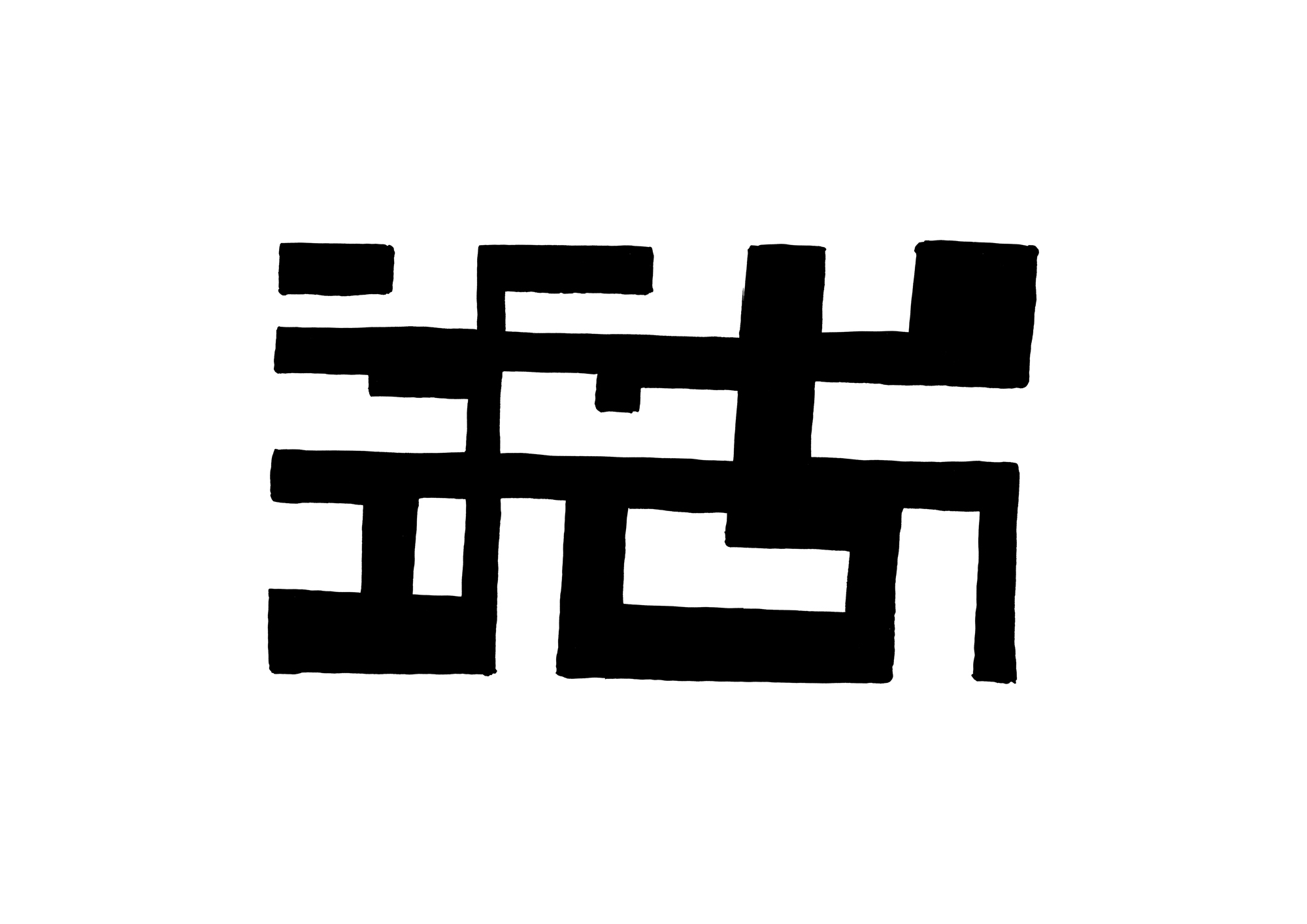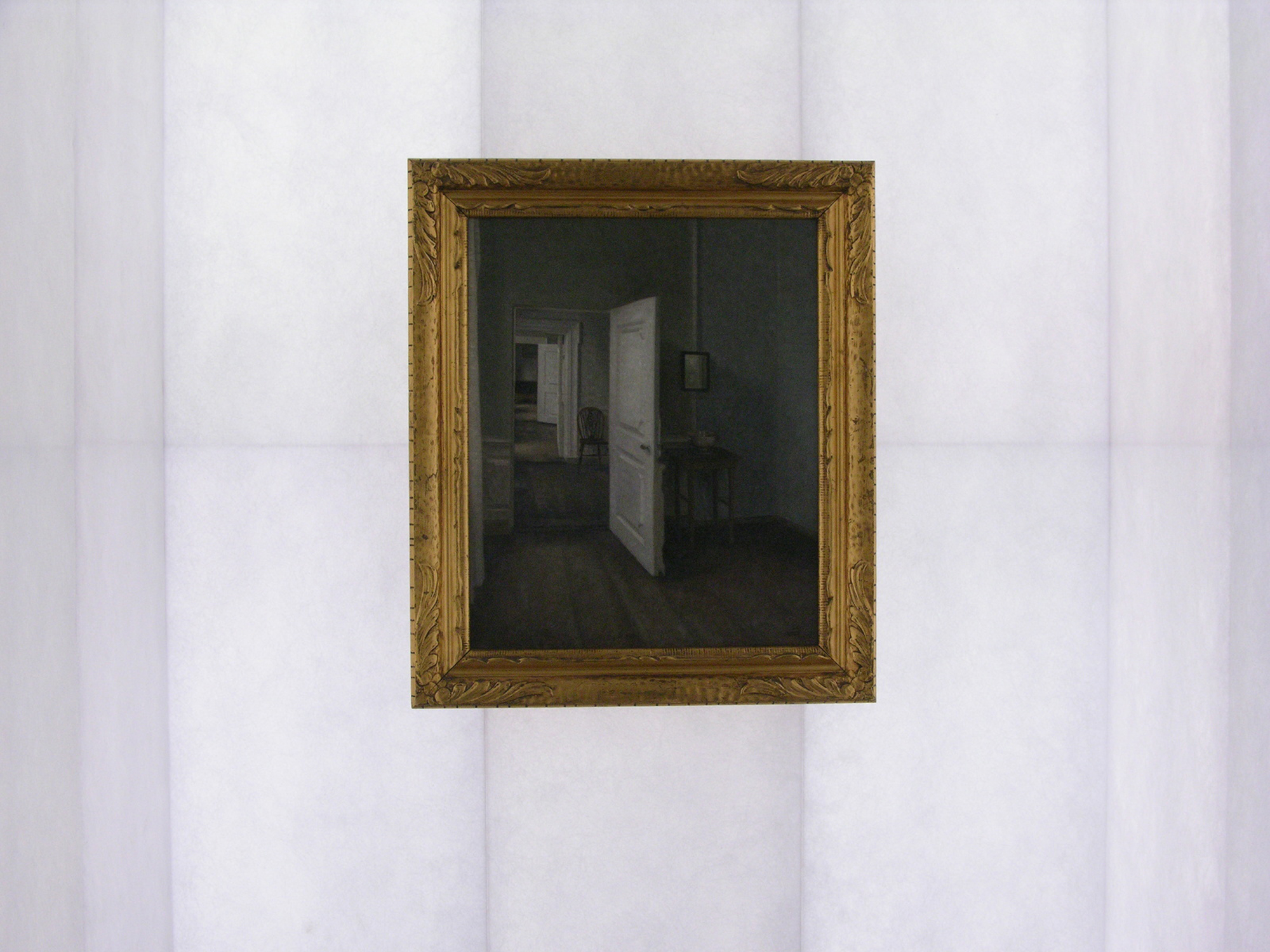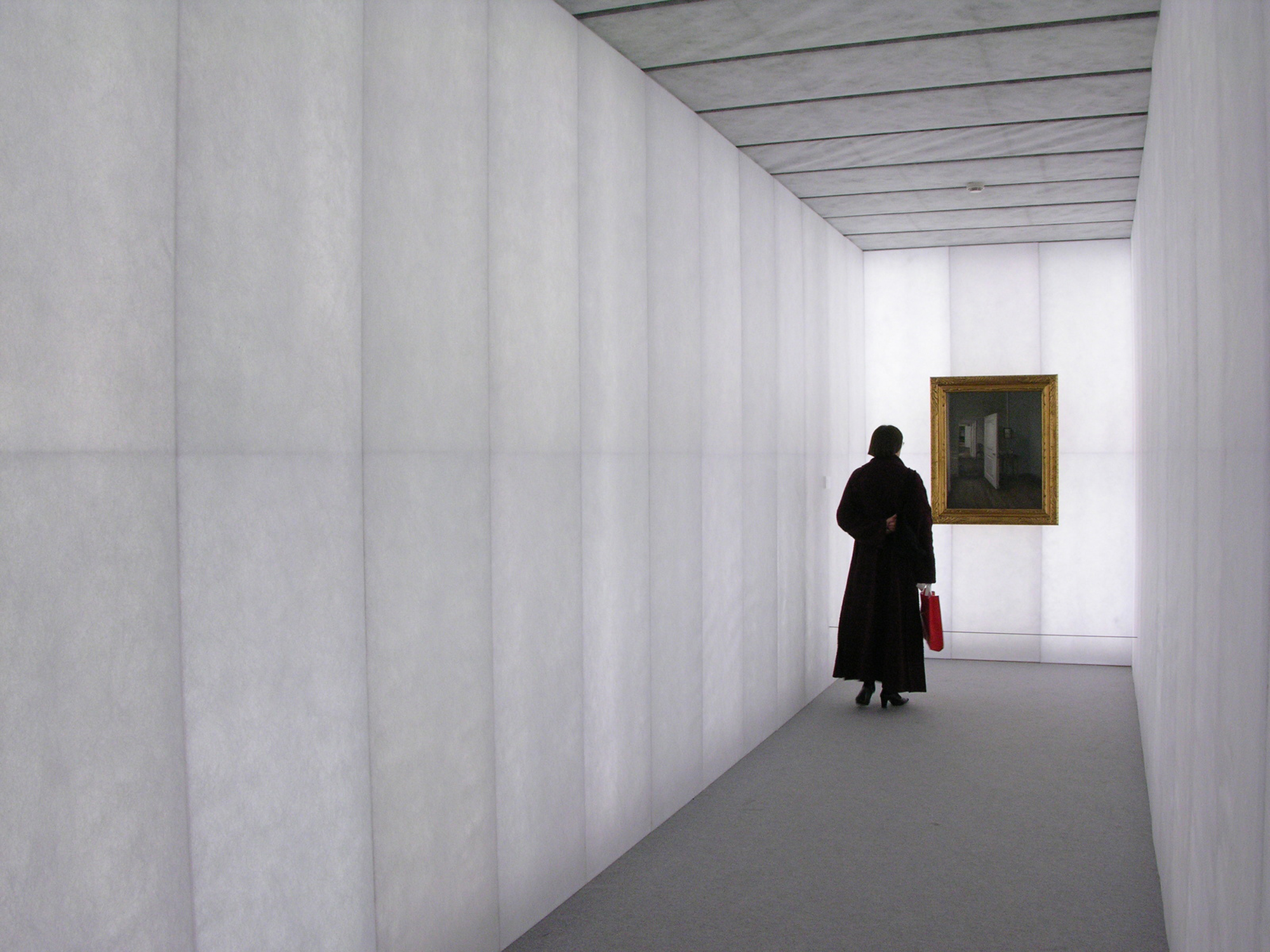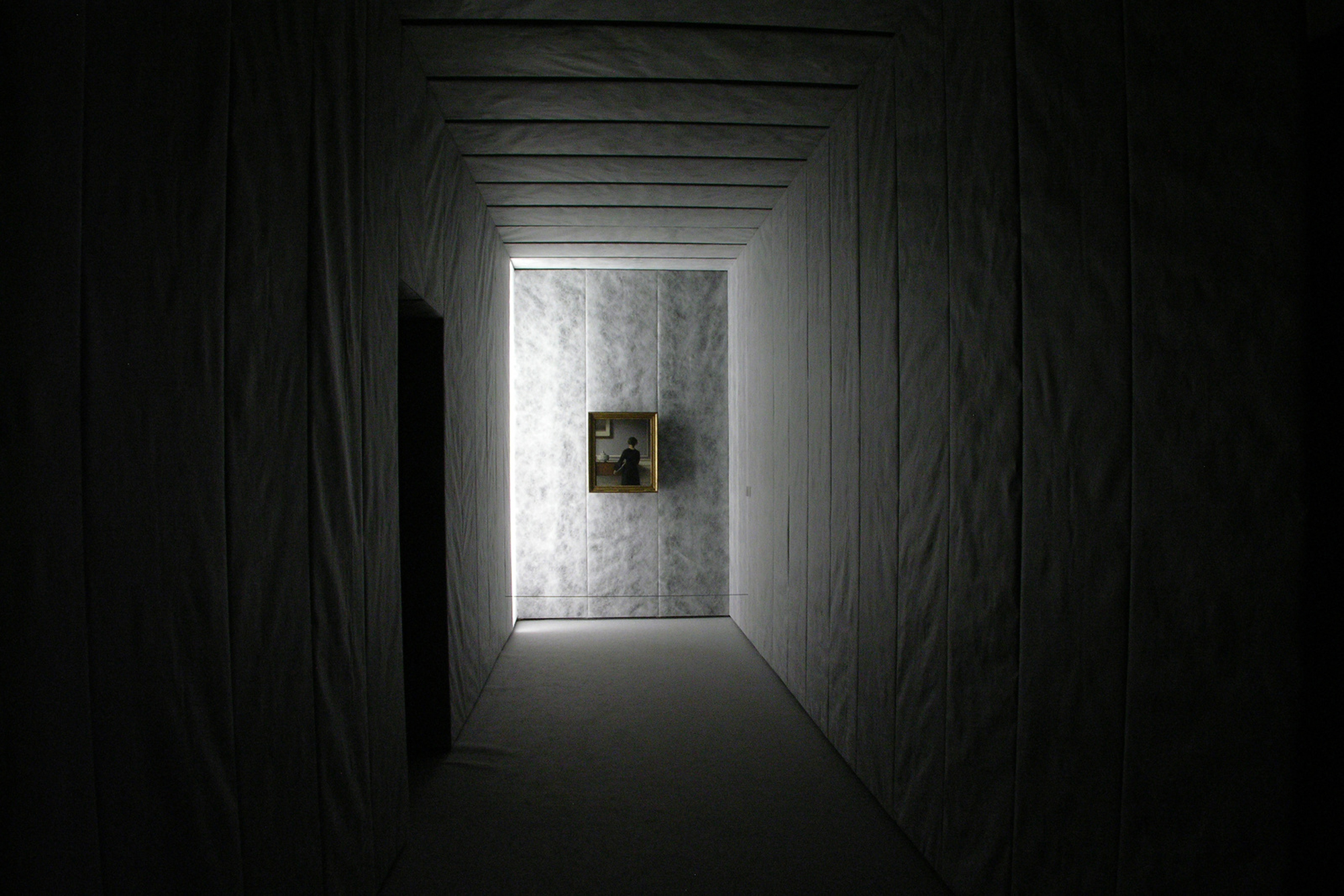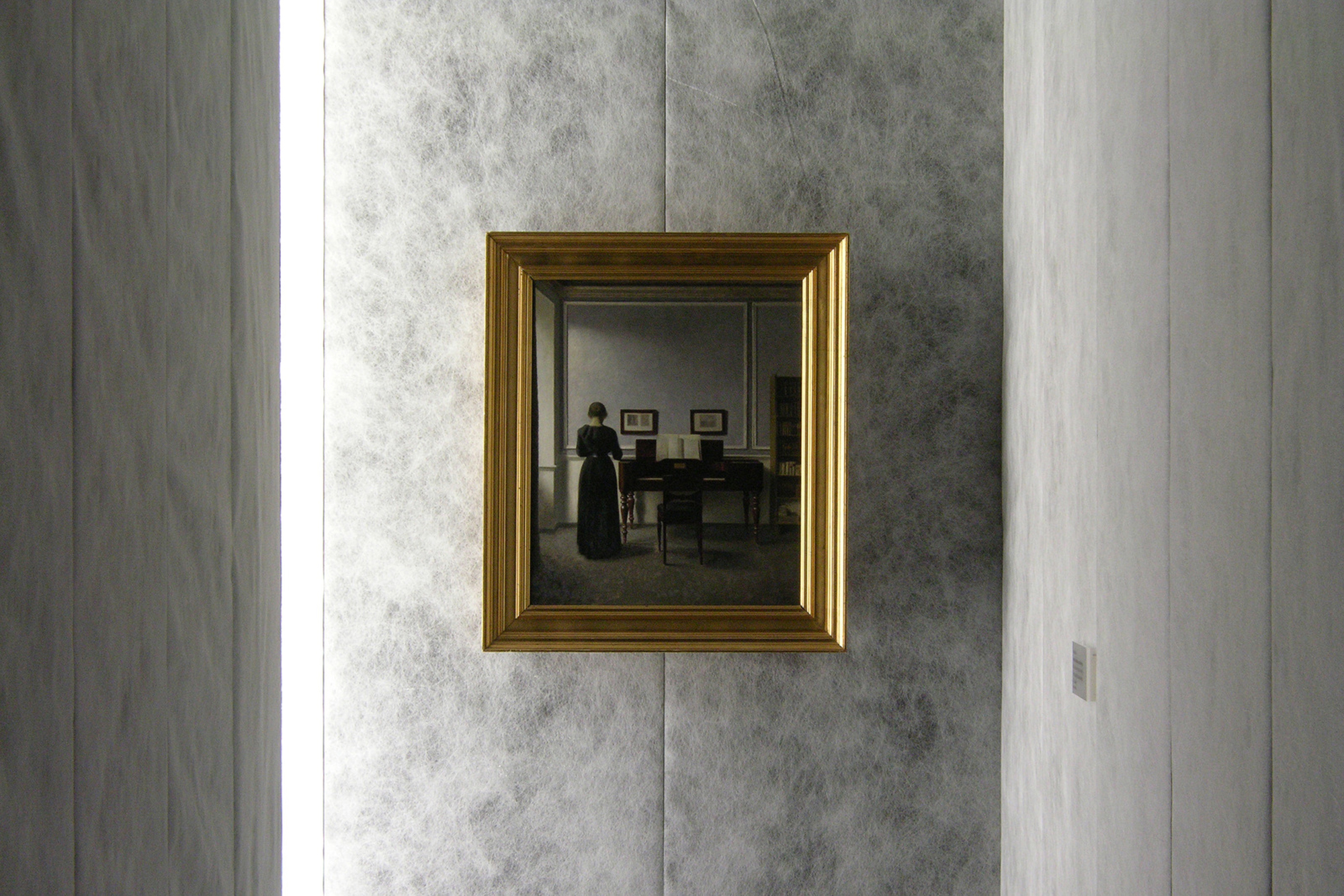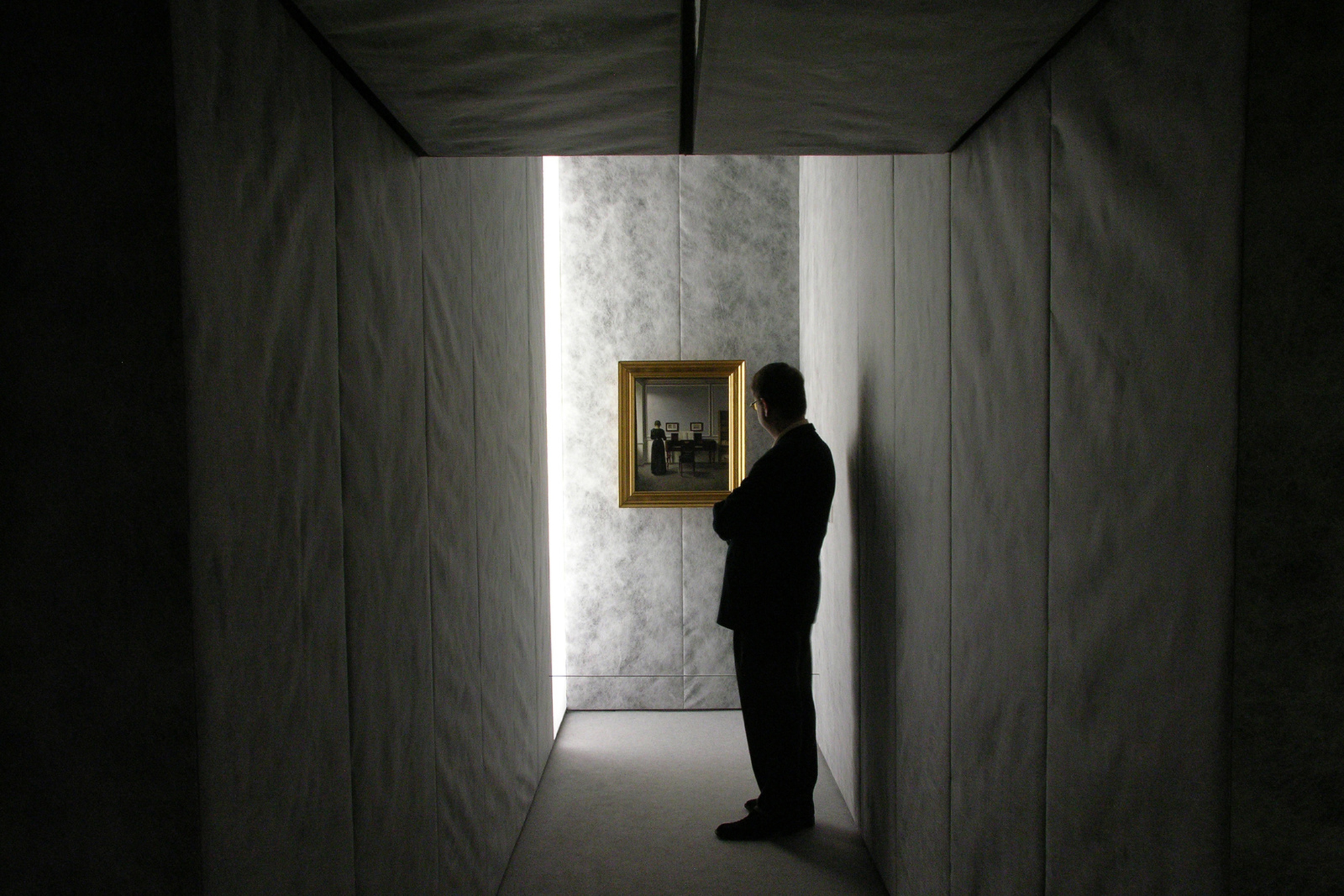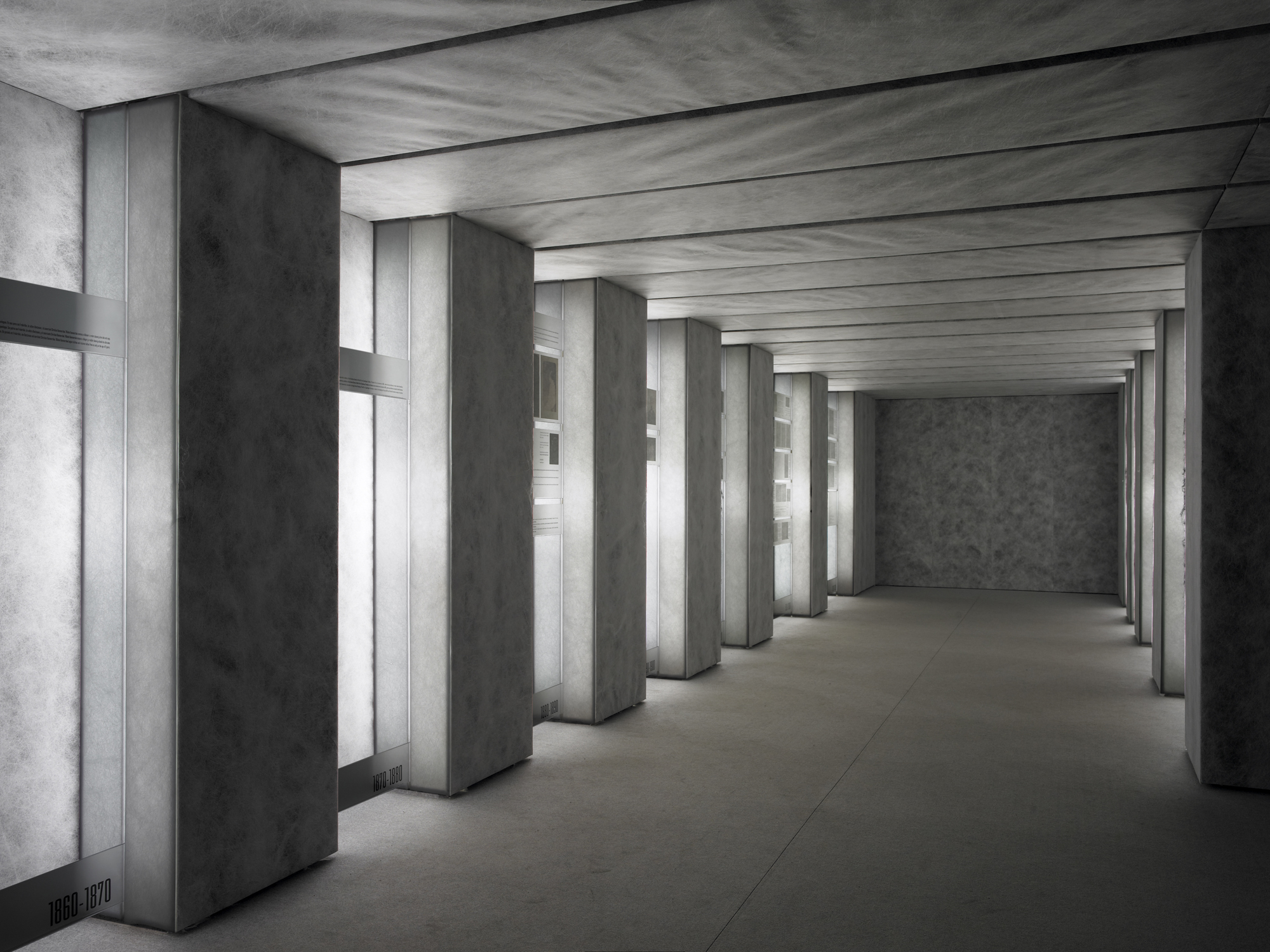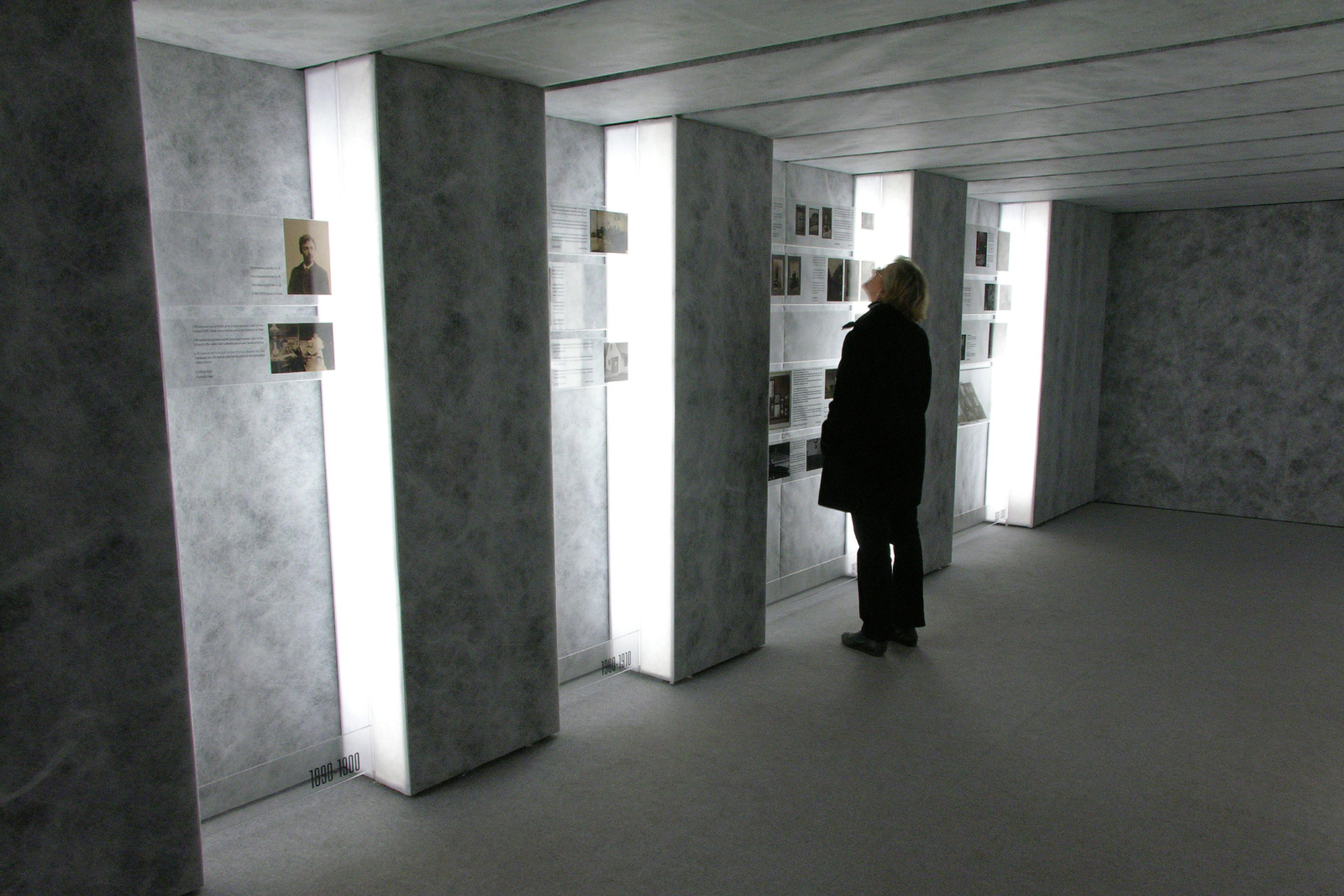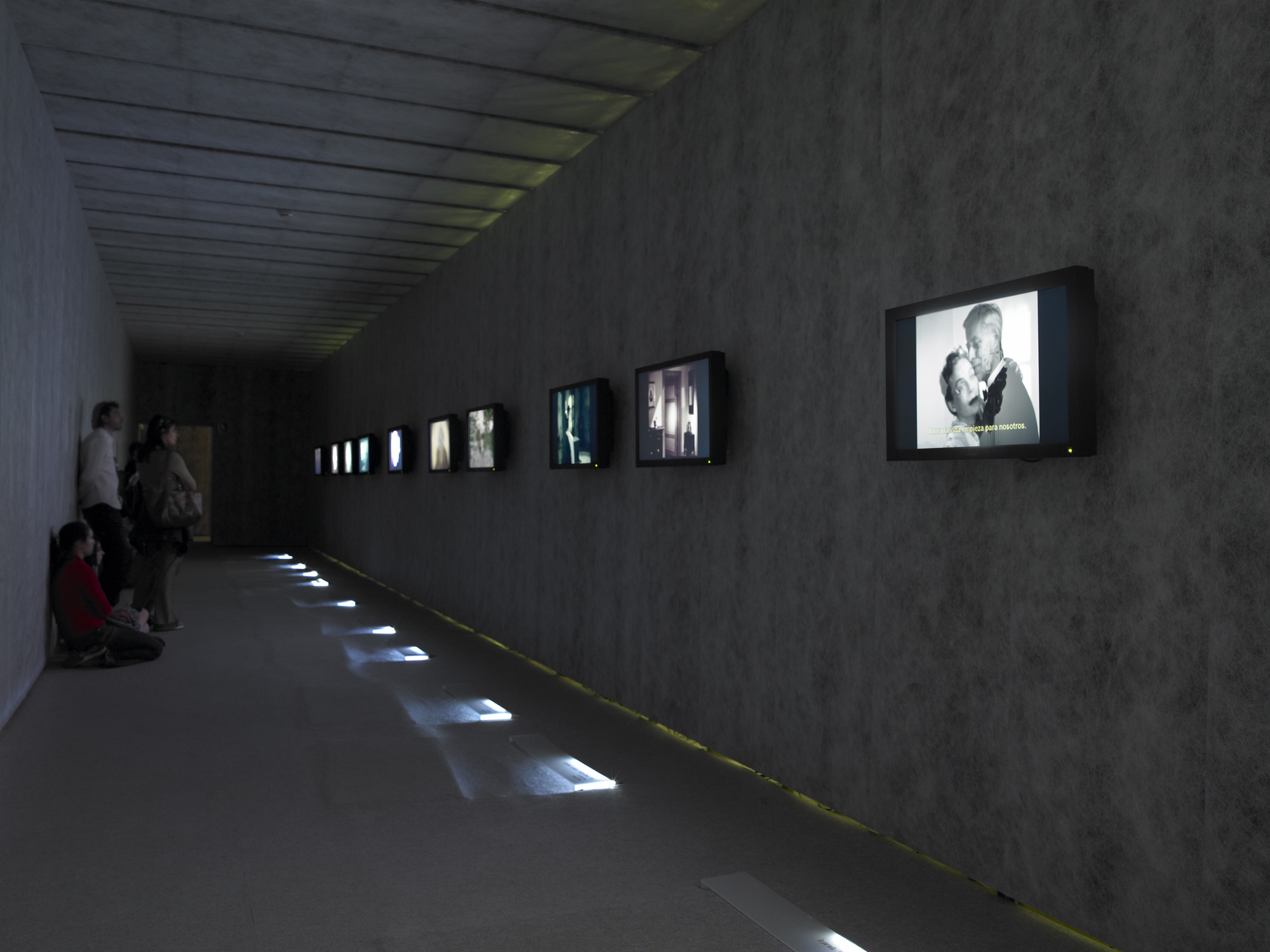The CCCB presents the exhibition Hammershøi and Dreyer, bringing together for the first time the bodies of work of the two most universal Danish artists of all time: the painter Vilhelm Hammershøi (Copenhagen, 1864–1916) and the filmmaker Carl Theodor Dreyer (Copenhagen, 1889–1968). The show is a co-production of the CCCB and Copenhagen’s Ordrupgaard.
This exhibition is the first time Hammershøi’s work has been shown in Spain, represented here by 36 essential pieces. To date, anthological shows of the Danish painter have only been presented in Paris, New York and Hamburg.

The artists
Vilhelm Hammershøi (Copenhagen, 1864 – 1916) was an artist who created his own personal style, independent of the trends of the time. His work is confined to a few pictorial themes: interiors of the places where he lived; a solitary woman, normally with
her back turned to us, in a domestic setting; portraits of family and friends; monumental buildings in Copenhagen and London, and landscapes of the Danish island of Sealand.
These motifs appear repeatedly in his paintings, creating an atmosphere of mystery with no apparent action, and this immobility is one of the keys to the fascination it exerts.
Hammershøi’s range of colours is dominated by greys which, in his hand, acquire a strange depth. He was one of the painters who best knew how to express the tempo of solitude and the corporeal nature of light.
Carl Theodor Dreyer
(Copenhagen, 1889 – 1968) directed films that refine the
expressivity of light and shadow, and are characterized by an indefatigable quest for
spiritual truths and beauty. In the course of 40 years, he filmed both silent and speaking
films, including The President (Præsidenten, 1918), Michael (Mikaël, 1924), Master of the House (Du Skal Ære Din Hustru, 1925), The Passion of Joan of Arc (La Passion de Jeanne d’Arc, 1927), Vampyr (1932) and Day of Wrath (Vredens Dag, 1943). In 1955, Dreyer won first prize in the Venice Film Festival with the film The Word (Ordet). His last film, Gertrud (1964), was highly controversial, but was awarded the Danish Bodil Prize for the Best Film of the Year. Today it is considered one of the ten best films in the history of the cinema.



The analogies
The exhibition presented by the CCCB aims firstly to publicize two very well known creators for the history of painting and film, though they are little known beyond Danish borders. The Barcelona show is only the fourth international exhibition to be devoted to Hammershøi . Dreyer’s films are screened very occasionally, and this is one of the first times they have been presented in an exhibition.
The second challenge of this project is to show the strong visual and creative relations between the artists, and in their methods, their intimate understanding of art and their
aesthetic similarities.
Hammershøi and Dreyer have many thematic and formal analogies:
— They share the conviction that the greatest dramatic intensity is found in interiors (of a house, an image, a face).
— Their treatment of the human figure, particularly the female form: the enigmatic women with their backs to us in domestic interiors refer to the contemplation and ecstasy of the characters and their personal dramas, and even contain the hint of death.
— The dominance of light in the scene is impeccable in both artists. Hammershøi knew how to paint it , while Dreyer gave it cadence.
— Exteriors. First, there are the landscapes, charged with a very special atmosphere. Then there are the exteriors perceived through sculptural figures, windows and
doors closed on the interiors represented.





The exhibition
As pointed out by the exhibition curators, Anne-Birgitte Fonsmark, Annette Rosenvold Hvidt, Casper Tybjerg and Jordi Balló, Dreyer was probably ” Hammershøi ‘s best and maybe his only true heir”. However, the challenge of the exhibition is not just to highlight the analogies between the painter and the filmmaker, but also to establish the explicit link between the bodies of work of the authors in a two-way relationship. The exhibition will help us to understand some of the creative forms of the filmmaker by means of a knowledge of the painter’s work, and to better understand the essence of the painter in the light of the films by Dreyer that follow.
In order to achieve this aim, great care has been taken in the way the work of these two
creators is shown to the public. This is why the exhibition design has been entrusted to the architecture practice RCR Aranda Pigem Vilalta Arquitectes, with the collaboration of Ventura-Llimona.
The exhibition comprises 36 works by Hammershøi and 12 audiovisuals showing excerpts from Dreyer’s films . The exhibition also presents photographs and documents on loan from the two artists’ personal archives, highlighting the process of reflection and work involved in their creations.
The show begins with Dreyer, underlining the importance of light in his films. It continues with Hammershøi’s paintings, presented one by one to highlight the intimate relationship between the spectator and the work and to convey the central ideas of his painting: austerity, sobriety, silence and slowness.
Dreyer remains present throughout the sector devoted to the works of Hammershøi, turning a visit to the exhibition into a sensorial experience in which the spectator can admire Hammershøi’s works in the light of Dreyer.







Other projects by RCR Arquitectes
